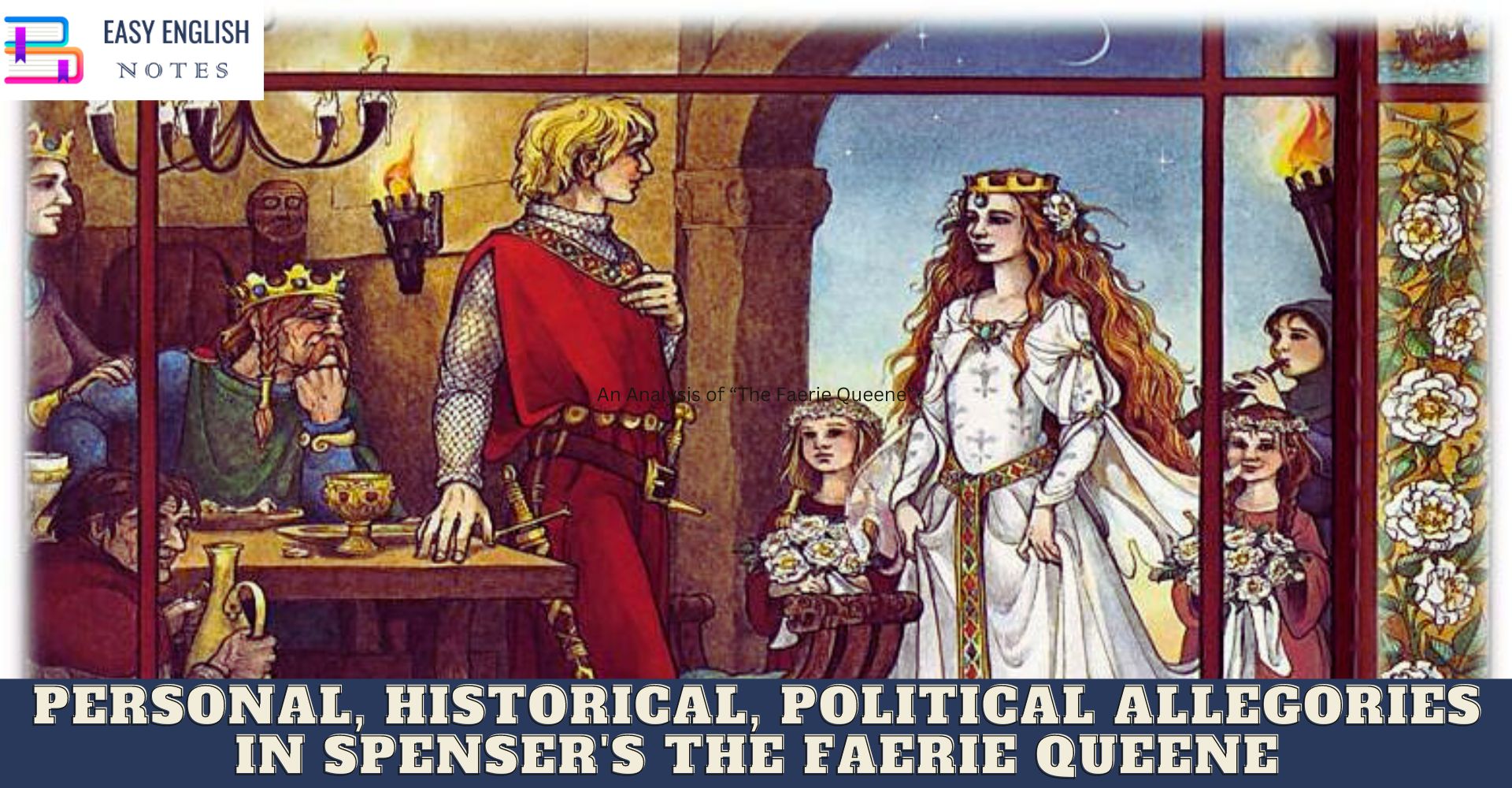The personal, historical, and political allegories in The Faerie Queene. The Faerie Queene, written by Edmund Spenser in the late 16th century, is an epic poem that is rich with allegorical content. Spenser uses allegory to explore a variety of themes, including personal morality, historical events, and political ideologies.
Personal Allegories:
The characters in The Faerie Queene are often used to represent personal virtues or vices. For example, the character of Redcrosse represents the virtue of Holiness, while characters like Duessa and Archimago represent deceit and treachery. Spenser also uses the characters to explore personal struggles and temptations. For instance, Redcrosse is tempted by the sensual pleasures offered by Una, which represents his struggle to remain chaste and virtuous.
Historical Allegories:
Spenser uses historical allegories to comment on contemporary political issues. For example, the character of Gloriana, the Faerie Queene, represents Queen Elizabeth I, who ruled England during Spenser’s lifetime. Similarly, the character of the Redcrosse Knight represents the Protestant church, which was undergoing a struggle for survival against the Catholic church during the 16th century. Other historical allegories in the poem include the battles between the Britons and Saxons, which represent the ongoing conflicts between England and Scotland, and the fall of Troy, which represents the fall of the Catholic church.
Political Allegories:
Spenser uses political allegories to explore different political ideologies. The poem is often read as a celebration of the Tudor dynasty, which ruled England during the time of Spenser’s writing. However, the poem also explores other political ideologies, such as democracy, monarchy, and tyranny. For example, the character of Guyon represents the ideal of the “just ruler,” who is able to balance mercy and justice, while the character of the giant Orgoglio represents the dangers of an overreaching and tyrannical government.
Also Read :
- Compare Hamlet with Macbeth, Othello and other Tragedies
- “The Pardoner’s Tale” is the finest tale of Chaucer
- Prologue to Canterbury Tales – (Short Ques & Ans)
- Confessional Poetry – Definition & meaning
Many scholars recognize two dominant categories of allegory in Spenser’s work: (1) moral and religious allegory; (2) historical and national allegory. “Political” is a term that might be interchangeable with either of the standard terms, historical/national. “Personal” might be interchangeable with either of the standard terms moral/religious. (The moral or religious allegory (one allegory described by two different focalizing words) addresses Spenser’s objective of producing a work that might instruct and guide gentlemen and noblemen into living morally and religiously upright and virtuous lives:
The general end therefore of all the book, is to fashion a gentleman or noble person in vertuous and gentle discipline. (Letter to Sir Walter Raleigh The Faerie Queene).
The dominant characters of this category of allegory are Red Cross Knight and Una. He has various companions at different times and does or does not behave, at any given moment, with virtue. An early example of virtuous action is when, with Una’s help, Red Cross Knight finally stops the monster Error in Wandering Forest. An example soon after of his acting virtulessly is when he abandons Una (allegorizing True Religion) at the inn after having a dream that she herself was unvirtuous and sent to seduce him.
The dominant historical or national (political) allegory is that which cast Gloriana, the Faerie Queene, as the double of England’s Queen Elizabeth I. She is introduced in Canto I as the bestower of valorous adventures and the rewarder of suppliants. Red Cross Knight is introduced as the recipient of a mission from Gloriana that would end with him slaying a “dragon horrible and stearne”:
Upon a great adventure he was bond,( That greatest Gloriana to him gave, (That greatest Glorious Queene of Faerie lond,(To winne him worship, and her grace to have, (Canto I, Stanza III)
The Dedication of The Faerie Queene establishes the connection between Elizabeth I and Gloriana. The historical/national aspects of the allegory are calculated to give her praise, glory, and honour for her virtue, valour, and noble sovereignty:
THE MOST HIGH, MIGHTIE, AND MAGNIFICENT (EMPERESSE …(ELIZABETH (BY THE GRACE OF GOD…(Defender of the Faith etc.(HER MOST HUMBLE SERVAUNT (EDMVND SPENSER(DOTH IN ALL HUMILITIE (DEDICATE, PRESENT, AND CONSECRATE THESE HIS LABOVRS (TO LIVE WITH THE ETERNITIE OF HER FAME.
In conclusion,
The Faerie Queene is a complex work that uses allegory to explore a range of personal, historical, and political themes. By doing so, Spenser creates a work that is not only entertaining but also serves as a commentary on the social and political issues of his time.
PLEASE HELP ME TO REACH 1000 SUBSCRIBER ON MY COOKING YT CHANNEL (CLICK HERE)











